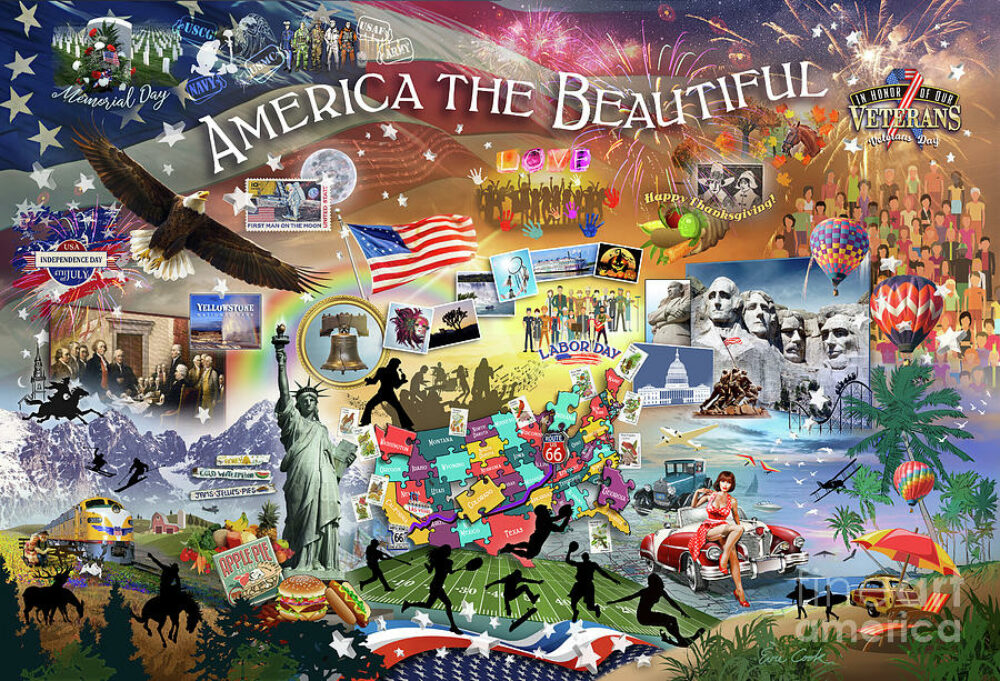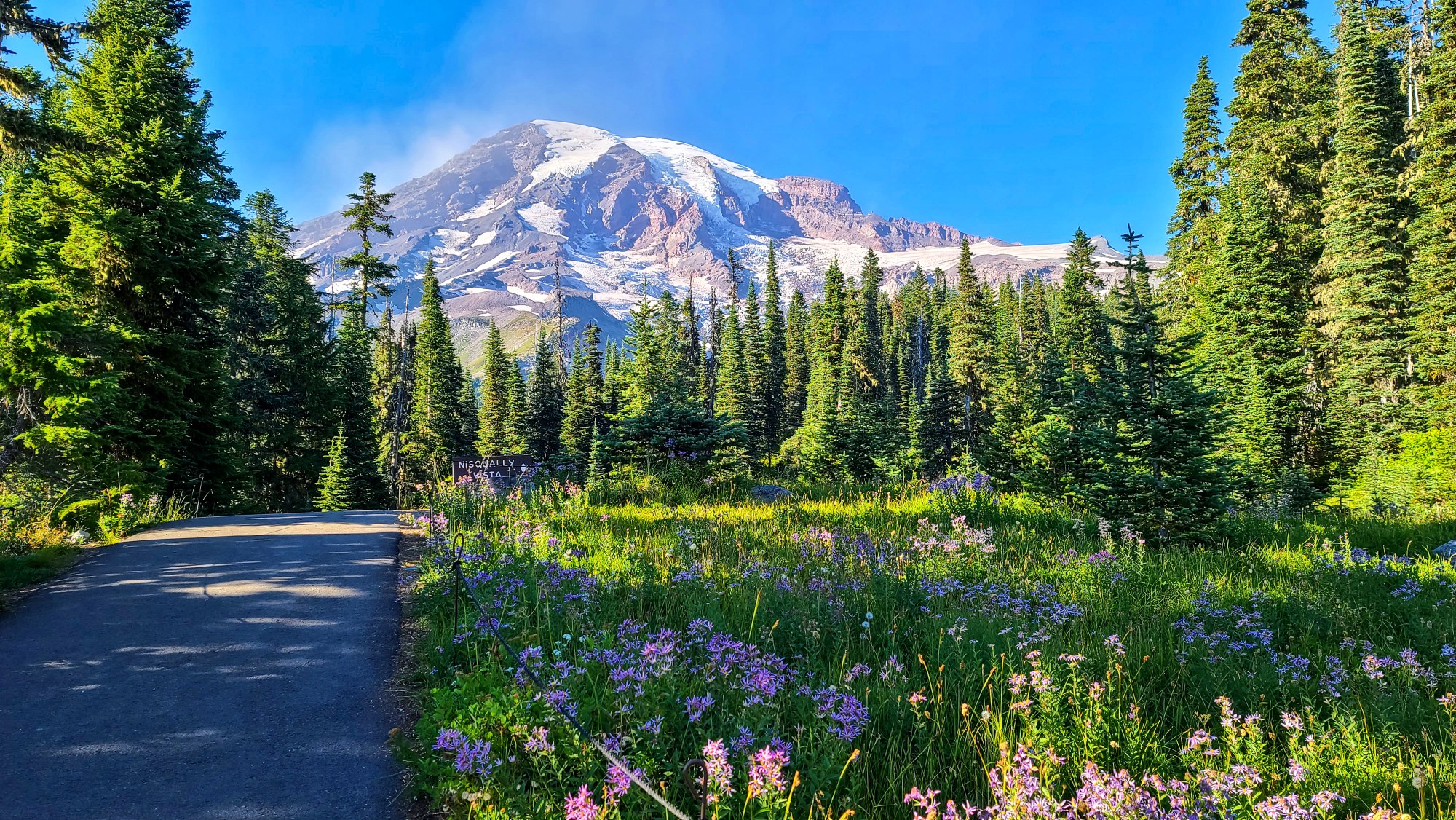Table of Contents
Mt. Rainier National Park is an American national park located in southeast Pierce County and northeast Lewis County in Washington state. The park was established on March 2, 1899, as the fourth national park in the United States, preserving 236,381 acres (369.3 sq mi; 956.6 km2) including all of Mount Rainier, a 14,410-foot (4,390 m) stratovolcano.
The mountain rises abruptly from the surrounding land with elevations in the park ranging from 1,600 feet to over 14,000 feet (490–4,300 m). The highest point in the Cascade Range, Mount Rainier is surrounded by valleys, waterfalls, subalpine meadows, and 91,000 acres (142.2 sq mi; 368.3 km2) of old-growth forest. More than 25 glaciers descend the flanks of the volcano, which is often shrouded in clouds that dump enormous amounts of rain and snow.
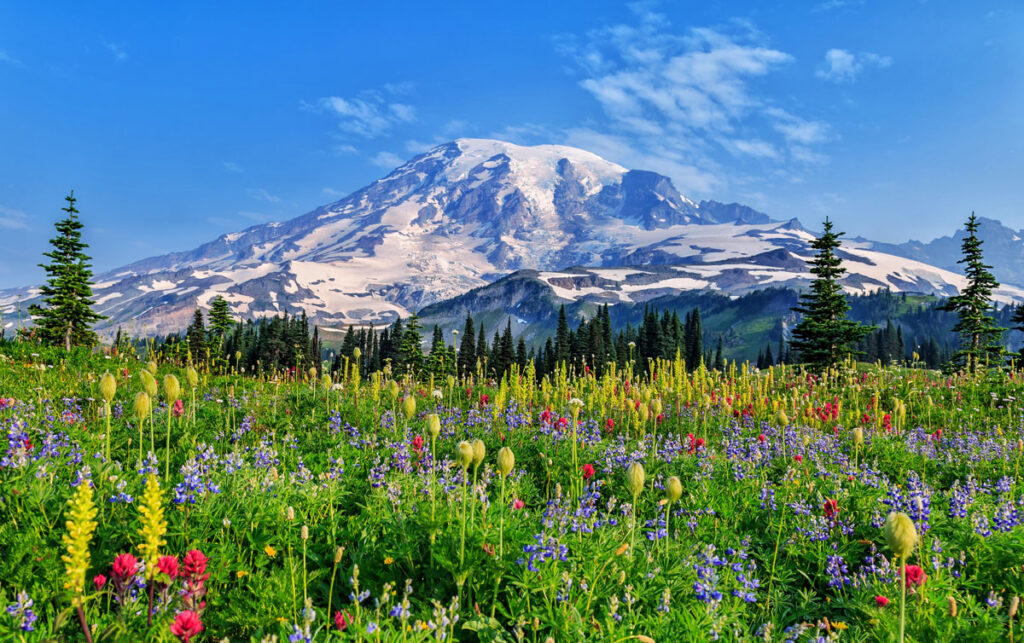
Mount Rainier is circled by the Wonderland Trail and is covered by glaciers and snowfields totaling about 35 square miles (91 km2). Carbon Glacier is the largest glacier by volume in the contiguous United States, while Emmons Glacier is the largest glacier by area. Mount Rainier is a popular peak for mountaineering with some 10,000 attempts per year with approximately 50% making it to the summit.
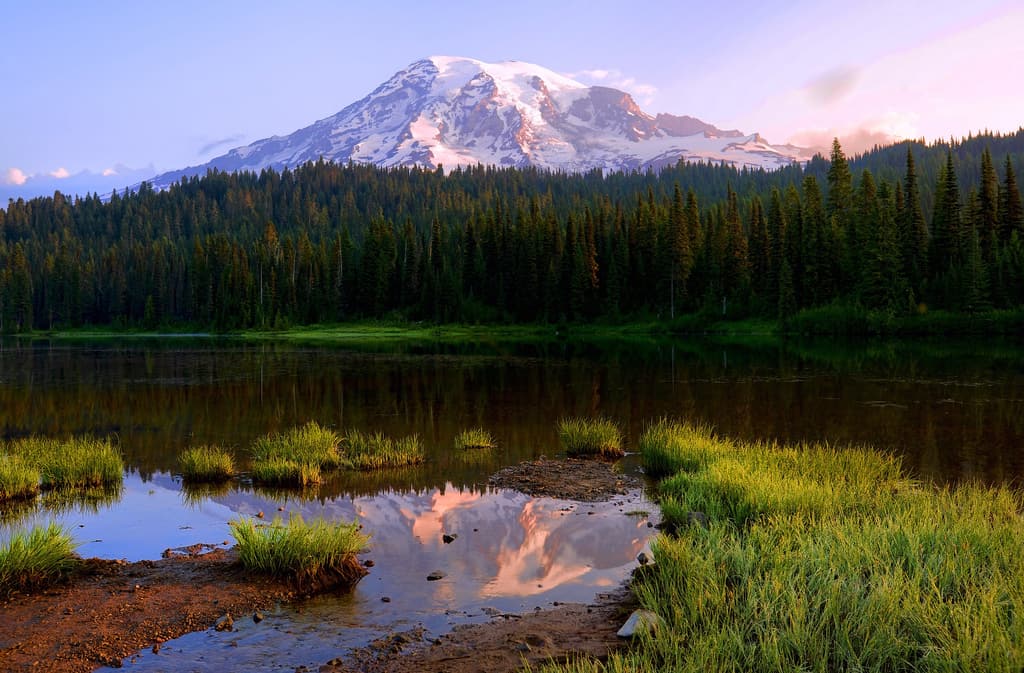
Ninety-seven percent of the park is preserved as wilderness under the National Wilderness Preservation System as Mount Rainier Wilderness, a designation it received in 1988. It is abutted by the Tatoosh, Clearwater, Glacier View, and William O. Douglas Wildernesses.
The park was designated a National Historic Landmark on February 18, 1997, as a showcase for the National Park Service rustic-style architecture of the 1920s and 1930s, exemplified by the Paradise Inn and a masterpiece of early NPS master planning. As a Historic Landmark district, the park was administratively listed on the National Register of Historic Places.
On March 2, 1899, President William McKinley signed a bill passed by Congress authorizing the creation of Mount Rainier National Park, the nation’s fifth national park. It was the first national park created from a national forest.[9] The Pacific Forest Reserve had been created in 1893 and included Mount Rainier. It was enlarged in 1897 and renamed Mount Rainier Forest Reserve. John Muir had visited Mount Rainier in 1888. Muir and nine others, including Edward Sturgis Ingraham, Charles Piper, and P. B. Van Trump, climbed to the summit in what became the fifth recorded ascent.
The trip to Mount Rainier had played a role in reinvigorating Muir and convincing him to rededicate his life to the preservation of nature as national parks. At the time national forests, called forest reserves at first, were being created throughout the American West, under the utilitarian “conservation-through-use” view of Gifford Pinchot. Muir came to be known as a “preservationist”. He wanted nature preserved under the more protected status of national parks.
But during the 1890s there was more public support for creating national forests than national parks. During that decade, Muir and his supporters were only able to protect one national forest[which?] as a national park. When the Pacific Forest Reserve was created in 1893, Muir quickly persuaded the newly formed Sierra Club to support a movement to protect Rainier as a national park. Other groups soon joined, such as the National Geographic Society and scientific associations wanting Mount Rainier preserved as a place to study volcanism and glaciology.
Commercial leaders in Tacoma and Seattle were also in support, as was the Northern Pacific Railway. The effort lasted over five years and involved six different attempts to push a bill through Congress. Congress eventually agreed, but only after acquiring assurances that none of the new park was suitable for farming or mining and that no federal appropriations would be necessary for its management.
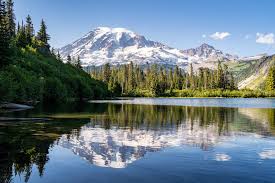
Mt. Rainier National Park Facts
Mt. Rainier National Park – Native Tribes Inhabited it
We begin our amazing list of Mount Rainier National Park Facts with archaeological evidence suggesting Mount Rainier has been used for the past 9,000 years. Multiple Native American tribes explored the river valleys, meadows, and forests to hunt, gather berries and look for medicinal plants long before Mount Rainier became a national park.
The Nisqually, Puyallup, Squaxin Island, Muckleshoot, Yakama and Cowlitz tribes continue to frequent the park. In recognition of their unique heritage and special relationship with Mount Rainier, park authorities have reserved special areas for Native American rituals and worship.
This process allows current generations to feel a special connection with their ancestors. Today, they continue to learn about the history of this place through its spiritual and cultural resources.
For the current generation, linking today’s tribal members to their ancestors, who lived in the shadow of the mountain for millennia, is a part of teaching them who they are and why their history matters.
A British Navy Captain Gave Mount Rainier its Name
Another of the fascinating Mount Rainier National Park Facts is that, according to the historical records, Spanish explorers would have been the first to see Mount Rainier. We know they entered the Puget Sound in 1790 and likely saw this magnificent mountain from a distance.
What they failed to appreciate, given their long-distance, was the special qualities which made it a place millions would visit annually by the twenty-first century.
For Captain George Vancouver of the Royal Navy, this place was unlike any other he had seen. Vancouver, following the Spanish by two years in 1792, entered the Puget Sound. Unlike his predecessors, however, he remained to explore and map the area.
Vancouver named not only the waterways and their immediate shores, but several of the mountains as well. Mount Rainier was named after his friend Admiral Peter Rainier.
Mounts Baker and Hood were also named after British admirals.
If you’re wondering, the cities of Vancouver in British Columbia and in the state of Washington are named after George Vancouver.
His expedition, which lasted from 1791-95, explored and charted North America’s northwestern Pacific Coast regions.
Climbing Mt. Rainier can be a Challenging Adventure
One of my favorite Mount Rainier National Park Facts has to do with the dangers associated with ascending the mountain.
Rising to 14,408 feet, Mount Rainier is the fourth highest mountain in the contiguous United States. It is approximately 11,000 feet above its immediate base. It covers 100 square miles, which is one-fourth of the area of the park.
Climbing Mount Rainier is not for the faint-of-heart. Each year, thousands attempt to reach the top which rises to almost three miles high. It’s sometimes called “the mountain that was God.”
According to data compiled by the National Park Service, as of 2022, more than 400 people had died in Mount Rainier National Park since government records were first kept.
About 25% of those deaths occurred while climbing on the mountain, which is an active volcano.
The Park Features over 250 Miles of Hiking Trails
If you love hiking then this next Mount Rainier National Park Fact is for you.
Mount Rainier’s trails connect hikers with nature. The park includes a hugely complex ecosystem producing diverse beauty and vegetation.
The 93- mile long Wonderland Trail was used over 100 years ago by patrol officers and firefighters and was the first trail in the park that fully encircled Mount Rainier.
It’s one of many trail options. The park offers over 260 miles of maintained trails for your enjoyment with some ranging from a few miles to over 20 miles.
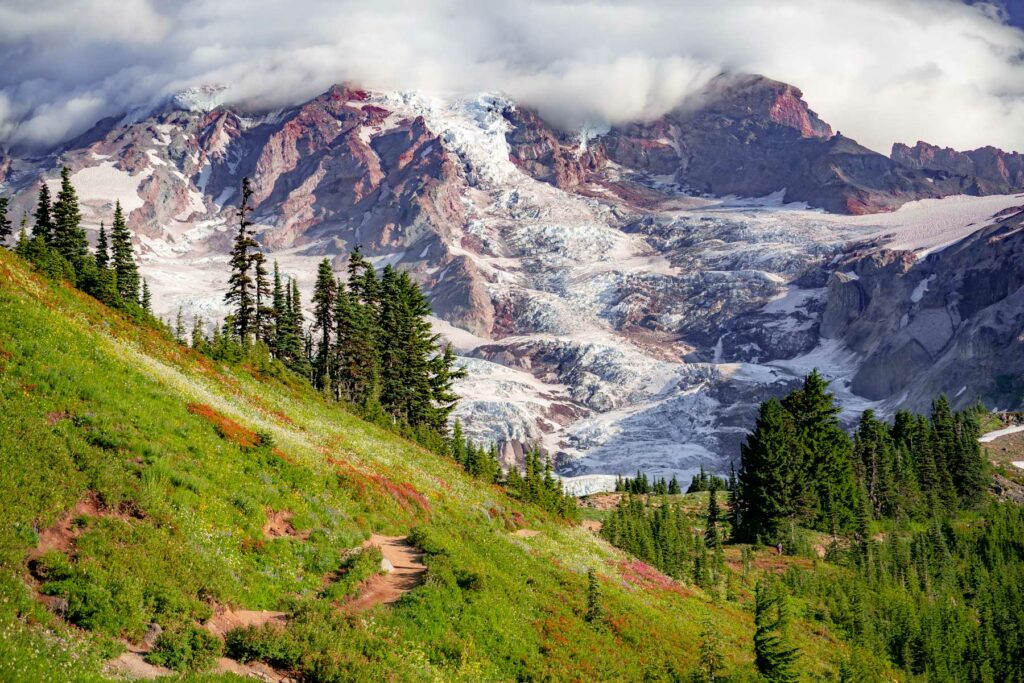
There are 25 Glaciers on Mount Rainier
If you enjoy glaciers then this next Mount Rainier National Park Fact is for you.
If you want to see some magnificent glaciers then Mount Rainier is the place to go. The park has at least 25 glaciers (named) and several other un-named snowfields.
Some of the glacies that are definitely worth seeing include the Carbon, CoWiltz-Ingraham, Emmons, Kautz, Nisqually, Paradise-Stevens and Winthrop.
One of the wonderful things about this park is that it’s easy to travel to a location with a great view of some of the largest glaciers you’ll ever find on the North American continent.
For More Information on Mt. Rainier National Park, Follow this Link…
VisitRainier | The Official Site of Mount Rainier Tourism
To Return to America the Beautiful Page, Follow This Link…
America The Beautiful, July 31st – (americathebeautifulday.net)

